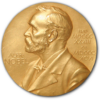UMFST-UMCH Anatomy lecturer Assoc. Prof. Lorand Denes injects color into his lectures, captivating students. Through body painting, he aims to make the structure of the human body more engaging and memorable. In a body painting workshop, second-year students learn anatomy in an extraordinary way. The extracurricular course covers the peripheral sensory innervation of the limbs, and students create segmental and nerve-based maps on their arms and legs. The plan is to expand in future workshops to cover the entire axial body, followed by other key areas of anatomy.
Assoc. Prof. Lorand Denes is a professor at the Institute of Anatomy at the Romanian main campus, UMFST in Targu Mures, Romania. He embarked on his career in anatomy 25 years ago, and his fascination with the field has only grown over the years. “I am also proud to be one of the first lecturers to initiate the educational process here at UMCH in 2019,” says Assoc. Prof. Lorand Denes in the interview. Additionally, he is a radiologist, providing him with the daily practice necessary to share clinically relevant information with students and present real-life clinical examples.
We interviewed Prof. Denes:
What inspired you to start the Anatomical Body Painting Workshop?
Like any educator, I am constantly striving to improve the educational process. Therefore, I actively search for literature on the subject. Obviously, the best way to enhance information retention and student outcomes is always the so-called “hands-on” approach, which requires the active involvement of students. Body painting is an excellent method to depict anatomical features on the skin of their peers. It also requires attention to detail and leads to observations of fine details that might be overlooked. Typically, I prepare a brief presentation on the background information related to the workshop’s topic and actively guide the students during the painting process to make it as anatomically accurate as possible. At the end, we discuss the anatomy of what has been painted on the finished “canvas.”
What value do the students gain?
Hopefully, the students become familiar with the anatomical topic presented during the workshop, including fine anatomical details that will be useful in a clinical setting. They also gain experience in working with the human body and are encouraged to correlate clinical findings (obtained through observation and palpation) with their background anatomical knowledge. This serves as an excellent introduction to physical examination, laying the foundation for the clinical years.
Gallery:





















